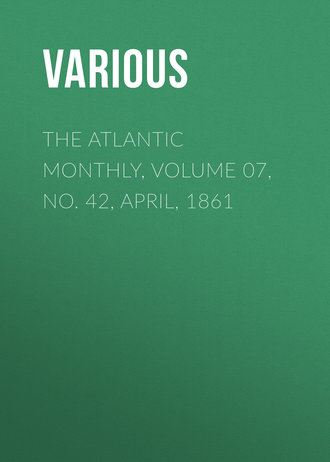 полная версия
полная версияThe Atlantic Monthly, Volume 07, No. 42, April, 1861
4
De Bow's Review, January, 1850. Quoted in Olmsted's Back Country, p. 451.
5
Except when used by the accomplished statistician, there is nothing more fallacious than the figures of the census. As the author of this article is a disciple neither of Buckle nor De Bow, they have not been used at all; but a few of the census figures are nevertheless instructive, as showing the difference between the Free and the Servile States in respect to popular education. According to the census of 1850, the white population of the Slave States amounted to 6,184,477 souls, and the colored population, free and slave, brought the total population up to an aggregate of 9,612,979, of which the whole number of school-pupils was 581,861. New York, with a population of 3,097,894 souls, numbered 675,221 pupils, or 98,830 more than all the Slave States. The eight Cotton States, from South Carolina to Arkansas, with a population of 2,137,264 whites and a grand total of 3,970,337 human beings, contained 141,032 pupils; the State of Massachusetts, with a total population of 994,514, numbered 176,475, or 35,443 pupils more than all the Cotton States. In popular governments the great sources of general intelligence are newspapers and periodicals; in estimating these, metropolitan New York should not be considered; but of these the whole number, in 1850, issued annually in all the Slave States was 61,038,698, and the number in the not peculiarly enlightened State of Pennsylvania was 84,898,672, or 3,859,974 more than in all the Slave States. In the eight Cotton States, the whole number was 30,041,991; and in the single State of Massachusetts, 64,820,564, or 34,778,573 more, and in the single State of Ohio, 30,473,407, or 431,416 more, than in all the above eight States.









